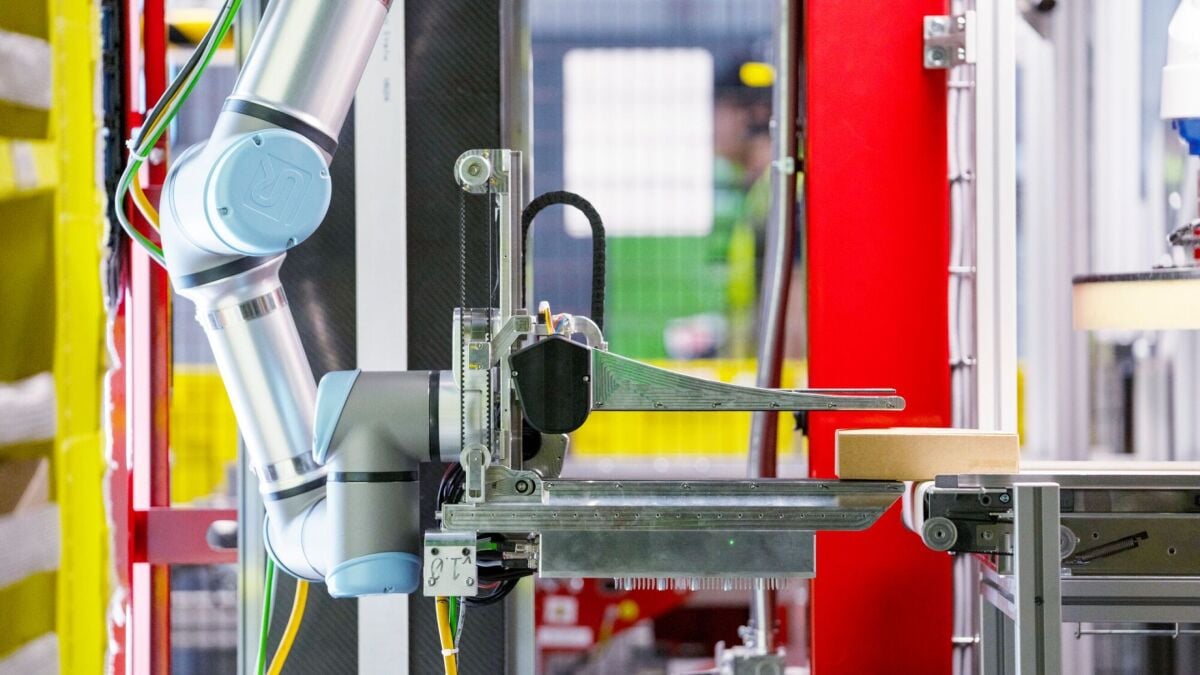This week Amazon debuted a new warehouse robot that has a sense of “touch,” but the company also promised its new bot will not replace human warehouse workers.
On Monday, at Amazon’s Delivering the Future event in Dortmund, Germany, the retail giant introduced the world to Vulcan, a robot designed to sort, pick up, and place objects in storage compartments with the finesse and dexterity of human hands.
AI-powered robot dog is learning to ‘live’ like a human
But Vulcan “hands” don’t look human. Instead, the robot’s “end of arm tooling” looks like a “ruler stuck onto a hair straightener,” as Amazon describes it. The Vulcan warehouse robot is also loaded with cameras and feedback sensors to process when it makes contact with items and how much force to apply to prevent damage.
In its warehouses, Amazon’s inventory is stored in soft fabric compartments of about one square foot in size. Each compartment can hold an average of up to 10 items. Vulcan’s ruler can move items around in the compartments to make more space. The hair straightener paddles hold the item, while a conveyer belt on the paddle pushes the item into the compartment. For picking up items, Vulcan has a suction cup.
Mashable Light Speed
According to Amazon, Vulcan can handle 75 percent of the items in Amazon warehouses and has already been deployed at fulfillment centers in Spokane, Washington and Hamburg, Germany.
With its sophisticated capabilities, the big question is whether Vulcan will replace human workers. “I don’t believe in 100% automation,” Aaron Parness, who leads the Amazon Robotics team, told CNBC. “If we had to get Vulcan to do 100% of the stows and picks, it would never happen. You would wait your entire life. Amazon understands this.” Instead, the idea is for Vulcan to take on the higher compartments that would normally require workers to use a step ladder.
The announcement also highlighted “new categories of jobs at Amazon, from robotic floor monitors to on-site reliability maintenance engineers.” It also mentioned upskilling programs for employees who want to gain more high-tech experience.
That said, as the number of robots deployed in Amazon fulfillment centers has increased, the number of employees has decreased. According to a 2024 report from Benzinga, the number of Amazon employees decreased by 100,000, while over 750,000 robots have been deployed, up from 520,000 in 2022.
